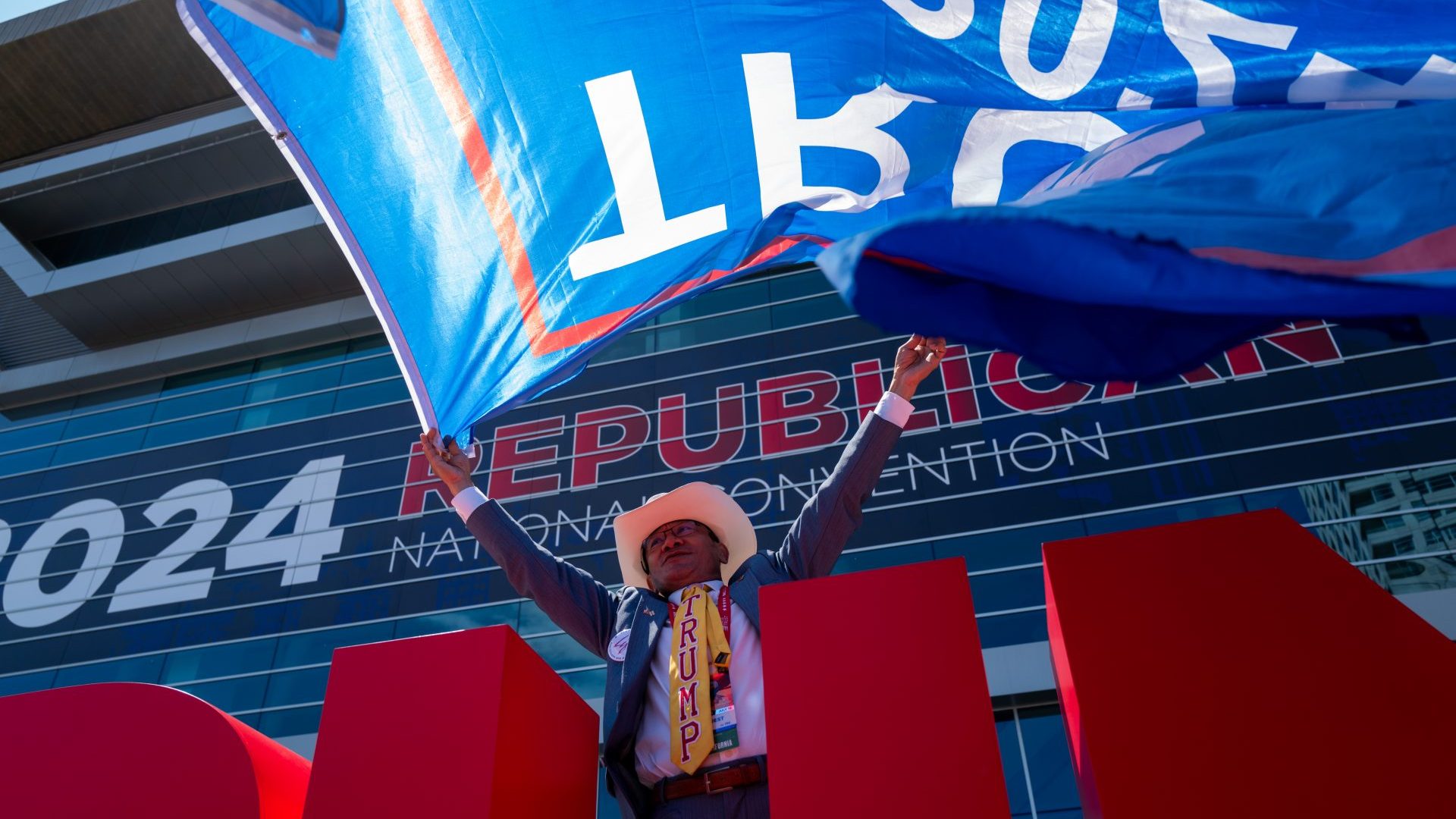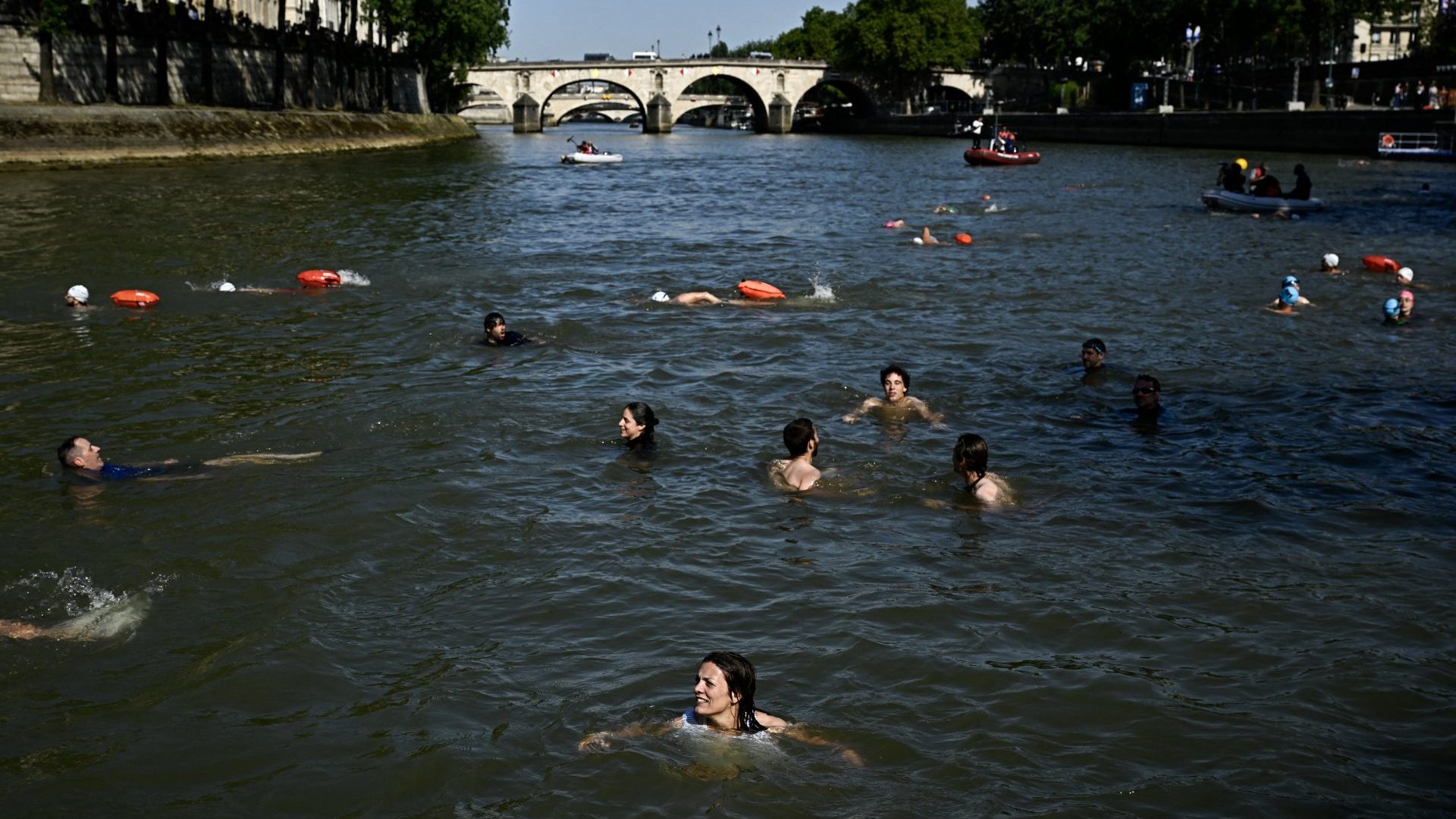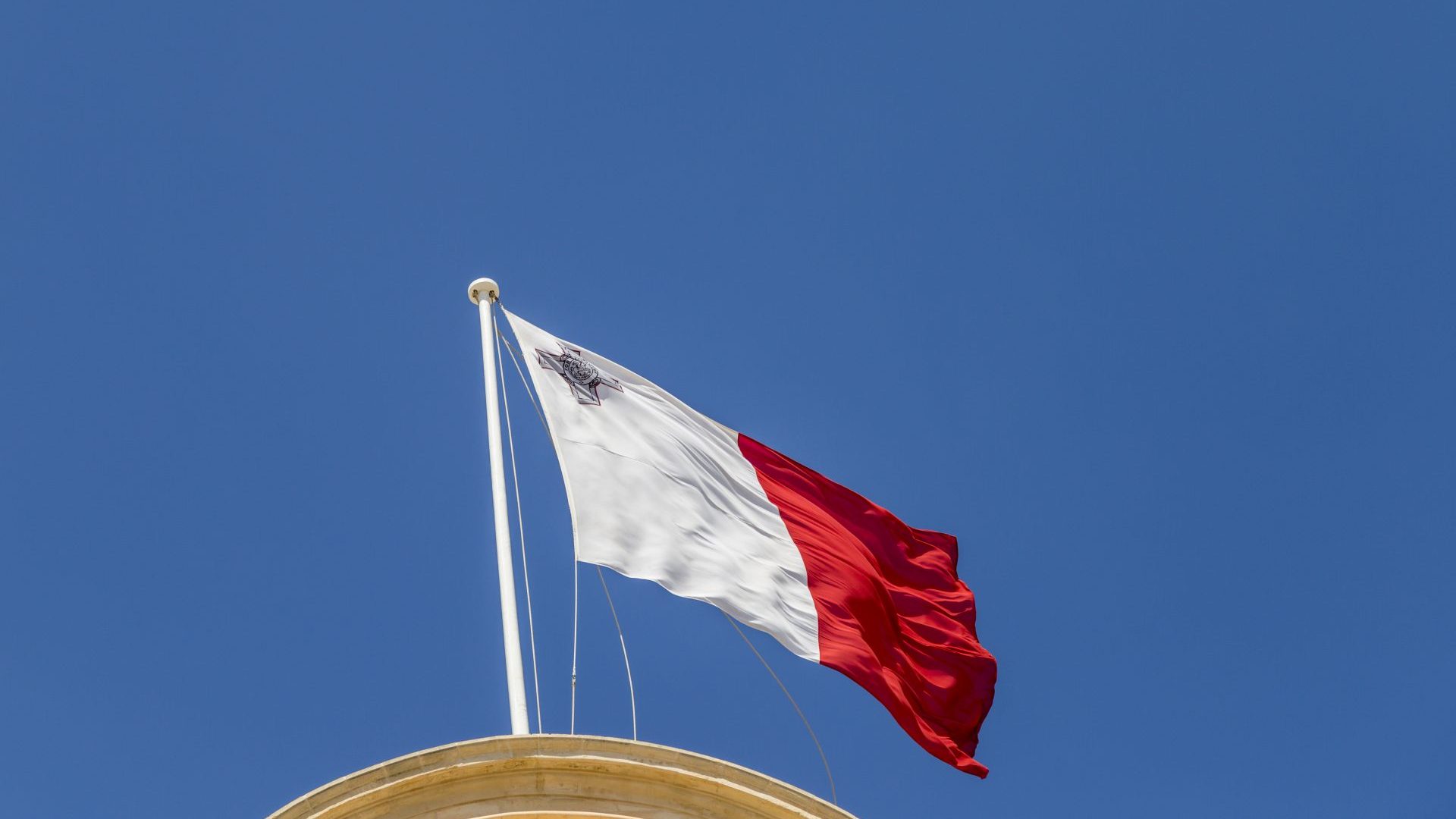It was a sunny, clear day, the sky impossibly blue outside Milwaukee’s main railway station, so I decided to walk. I was headed for a stage that the city had set up for protesters five blocks from the Fiserv Forum, the venue for the Republican National Convention. It was there, in that 714,000-square foot building, that Donald Trump would accept the party’s presidential nomination later that night.
As I set off on the one-mile journey, the streets around the train station were largely deserted – aside from the police gathered on every corner. Outside the Baird Center, one of the minor convention venues, a vendor was selling sweatshirts emblazoned with Trump’s image, along with outraged reminders of his felony conviction. His name was Travis and he told me he had sold 50 of them since getting to Milwaukee on Tuesday.
We talked some more. Travis, from East Chicago, Indiana (“nothing to do with the city of Chicago”, he clarified) said he would be there until Saturday. I told him how surprised I was to find the city so calm. He shrugged and recommended I attend the next Republican rally, which was scheduled to take place in Grand Rapids, Michigan, if I wanted more excitement. “That’s where you’ll have the real pro-Trumpers,” he said.
“Wait, what are you then?” I asked. He paused. “I’m a businessman,” a good-humoured smile spreading across his face.
I resumed my journey towards the stage, spotting my first handful of protesters on a nearby bridge. One of them wore a banner that described Trump as a “rapist, racist and seditionist”.
Outside the main conference venues, it was easy to spot the convention delegates. Their passes hung from their necks, but they also stood out on account of their clothes – the men invariably in dark suits, and the women in knee-length, often red dresses. In contrast, the ardent Trump supporters who did not have convention access were decked out in over-the-top, highly patriotic garb featuring the US flag and Uncle Sam.
And then there were the religious zealots, waving anti-abortion, pro-Jesus and “homo sex is a sin” signs, sermonising to the crowd through speaker systems that carried their voices above the din of the helicopters that whizzed overhead and the music that was pumping out from the nearby bars. And at every turn were the vendors with their stalls offering Trump buttons, MAGA hats, Trump 2024 signs reading “I’m voting for the felon”, T-shirts and, most bizarrely of all, yellow rubber ducks topped with Trump’s hairdo.
Apart from Travis, one other black vendor and a small number of Asian Americans, it was an overwhelmingly white crowd. Almost every other black person I saw was wearing the bright orange shirt to indicate they were event staff.
Every police force in the state appeared to have dispatched its police officers to the city. I spotted the insignia of the Madison, Algoma, and Oak Creek police forces. Even the US Coast Guard was there, patrolling the city’s Milwaukee River.
On another bridge, I passed more Trump supporters decked out in American flags. They broke out in “Trump 2024”, and “We love Trump” chants.
Still, no sight of anti-Trump protesters. An officer standing guard by a barricade suggested I walk towards “Juno Street” where he had heard the main protests were taking place. He apologised for his vague directions, explaining that he wasn’t from “here”.
On my way to what Google Maps taught me was in fact West Juneau Avenue, I saw two people getting out of an SUV with pro-Biden signs. Surely, they would know.
I asked one of them where I could find the main protest area. “I don’t know to tell you the truth, I don’t know,” he said, looking a little defeated. “I’m going there,” he said, pointing back towards where I had just come from.
I walked a few more blocks and had a chat with a pro-Trump supporter, who told me the only hostility he had experienced came from the anti-Trump, “not welcoming” billboards that he had spotted from the highway travelling from Chicago earlier that day.
I decided to go back to the Baird Center. Two Black Lives Matter protesters had shown up, both white – a guy wearing a balaclava and an “I sell weed” T-shirt, and a woman in shorts. They had set up shop right next to Travis with their placards, speakers loudly blasting hip-hop.
A convention attendee noticed the BLM protesters and posed next to their signs, pulling his jacket to the side with an exaggerated tug to better display the pro-Trump T-shirt underneath. Another attendee laughed as she filmed him.
Now, we would finally see something, I thought. But the balaclava guy did nothing and the woman in shorts started filming the pro-Trump attendee in return, smiling good-naturedly as she followed him around for a little bit.
Then, two golf carts pulled up. As their guests climbed out, the man sitting next to me said, to no one in particular: “That’s Richard Petty”. Who? I asked. “Richard Petty,” he repeated – a famous racecar driver. I tried to get a glimpse, but a row of police officers blocked my view. Richard Petty was the only famous person I would not quite see all day.
The BLM protesters had settled in, now sitting cross-legged on the ground. The balaclava guy was smoking a joint, and dangling a pendant in front of the female protester. Were they so bored that they were trying to hypnotise each other?
On the train heading home, I looked at the cap a young woman had given me earlier in the day. I hadn’t looked at it properly, afraid that it would be emblazoned with some offensive slogan. Instead, it was branding for a website that claimed to offer “the most accurate way to follow the election”.
I felt heartened by the thought that young people had been handing out merchandise encouraging convention attendees to seek out trustworthy election news coverage.
But when I visited the website, I was startled to find that it was really a crypto-trading betting website, and I learned that $17.9m of bets had been placed on Biden dropping out of the presidential race. And now that Biden’s gone, well, perhaps despite the shootings, the social media ranting and the feverish speculation about Biden’s successor, some of the truth might just get through to Trump’s supporters after all.
Linda A Thompson is a Belgian journalist and editor living in Brussels




